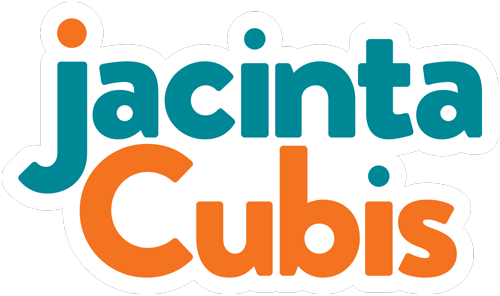Dealing with Disrupters
BANG! BANG! BANG!
The noise was so loud I could feel it.
CLANG! CLANG! CLANG!
It lasted for ages. And kept on going.
It was louder than the espresso machine and the friendly buzz of my local café.
What was causing this commotion? An urgent repair to the kitchen’s plumbing? An enthusiastic kitchen hand with a dirty pot? The chef chasing a recalcitrant fly, or worse?
Me and all the other café patrons stopped what we were doing to find out. We glared at a toddler armed with an empty coffee cup and the tempting surface of a wooden table.
Three ingredients for disruption. Disruption which prevents me from absorbing the article I was reading. That interrupts the progress of a business meeting. And the sharing of news between friends over breakfast. What did we miss out on?
And nobody said anything, including her dad. He drank his tea and leafed through his book.
THUD!
We shifted our glares and scowls to him, but he was oblivious. Eventually, he turned his last page, slowly packed, helped his child off her chair and they left. Loudly.
Then we let loose.
‘Unbelievable!’
‘I couldn’t hear myself think!’
‘Who lets their kid do that?!’
We were loudly indignant, chipping in from all corners of the café.
But we’d kept our silence during the disruption. Understandable. Who’d dare to get between a kid and their parent – unless you’re like Harry from The Slap, the bestseller by Christos Tsoiolkas. (If you haven’t read it, Harry slaps a child who is not his own at a friend’s barbecue. His action reverberates through the lives of everyone who was there.)
It made me wonder, if that kid had been an adult, would anyone have said anything? And if anyone was brave enough, who should it be? The busy café owner, Adam, who wants to keep everyone happy? The flustered barista who couldn’t hear orders? Or the group of customers?
If we’d been in a workshop (you knew this was coming), not a café, would we have said anything? And who’s job is it – the group’s or the facilitators? Stay with me – I’ll get to my response.
There’s often a Disrupter at workshops. I call them ‘Cranky Chris’, in honour of a man (not named Chris) who was at a series of workshops I facilitated years ago.
Chris was unhappy. He didn’t want to be at the workshop about roads and traffic in his town, but he didn’t want to leave. He wanted to have his say, but sat at a distance from most of the tables, throwing verbal grenades. He rolled his eyes at every activity we proposed and criticised his fellow participants’ ideas.
Some of his fellow workshop participants tried to work around his negativity but many gave up. Some barely tolerated his presence in their small group, others actively avoided him.
His belief that nobody would listen to what he had to say became self-fulfilling.
My responses changed over the course of our workshop series. Initially, I think I tried to win him over. That was a mistake.
A little humour worked better, chiding him gently for his body language and the effect it was having on others. Seeing a little opening, I gave him some jobs. Scribing at one table. Being the time keeper for another. These small responsibilities gave him little time to roll his eyes, cross his arms or sigh loudly. They also made him an essential part of any group he was in.
If you’re a regular reader, you’ll spot the pattern. Initially, I responded to the Disrupter as a bit of a crowd pleaser, then shifted to being more like a guide. I don’t think ‘dictator’ would have worked with him!*
Now back to Chris and his impact. If Disrupters are part and parcel of a workshop, you might wonder why you should bother trying to do anything about them. Silence is easier.
It’s hard to re-group after disruption, to pick up where you left off and continue the conversation. And that conversation is important. It’s why you’ve taken the time to gather people together, to give them information ahead of the session, to find a comfortable space to talk and to take time planning it.
You can’t afford the distractions of a Disrupter. Nor can your organisation. How do your meeting leaders respond to Disrupters? Do they ignore, placate, accommodate or shut them down?
How many of them could effectively guide a Disrupter to being a spectator? Could any of your meeting leaders work with repeat offenders and shift them from spectator to a contributor, perhaps onto instigator or even a facilitator? That’s right, every group has facilitators. You need more than just one at the head (or back) of the room.
That brings me to my response to the question: whose job is it to challenge a Disrupter?
I think it’s both the facilitator and the group. Every group has an agreement on how they work together. They create it together at the start of the session or follow the implicit principles and values of the organisation they’re part of. So it’s a group’s job to help each other stick to that agreement, under the guidance of the facilitator. Unless of course, that facilitator is a dictator. And that’s the topic of another blog.
If you’re looking to change how you respond to Disrupters, I can help. Book a call with me
Have a (fl)awesome week!
* Hey, long-time readers! Thanks for your patience as I continue to talk about the (fl)awesome foursome. New readers are joining us every week and I need to bring them up to speed. If you’re a new reader and haven’t yet met the (fl)awesome foursome, get the low down here).
Link: Christos Tsoiolkas, The Slap, Allen & Unwin, 2010
P.S. Wondering how you can get the most out of your remaining professional development and engagement budgets for this financial year? I can help!


